POHOIKI, Hawaii Island 鈥� For the first time in 25 years, geothermal energy in volcano country is not powering any Big Island homes or businesses 鈥� and seemingly no one has noticed.
Electrical customers have not suffered a single blackout or been asked to conserve energy as a result of the Kilauea eruption having forced the privately owned Puna Geothermal Venture to close unexpectedly two months ago, said Jay Ignacio, Hawaii Electric Light Co. president.
HELCO powers the island鈥檚 grid using a mix of electricity it generates and also buys from PGV along with other independent producers.
鈥淲e still have adequate margins (to meet the island鈥檚 power demands),鈥� Ignacio said of HELCO鈥檚 ability to supply 242 megawatts of 鈥渇irm鈥� electricity to an islandwide grid currently consuming 170 MW.
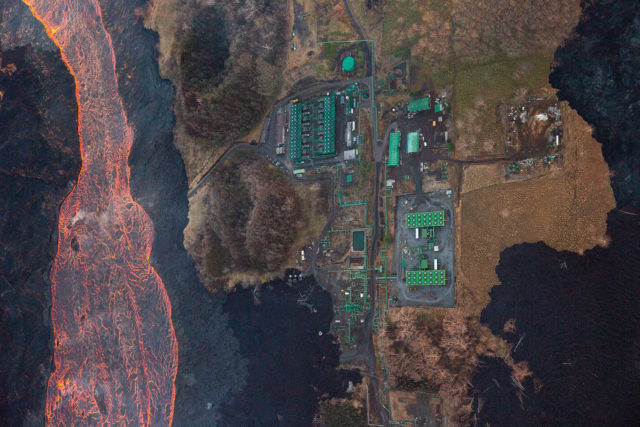
And those margins will grow.
A private 21.5 MW Pepeekeo biomass plant is scheduled to open late this year, Ignacio said.
Also, HELCO is reviewing proposals it solicited for 20 megawatts of solar or wind generation, and plans to increase the capacity of its Hilo hydroelectric plant by 0.5 MW, Ignacio said.
A single megawatt of electricity can power 200 to 300 Big Island homes, said Kevin Waltjen, HELCO general manager.
The pending interconnection of private solar generation will add still more capacity to the grid, the state .
鈥淎pproximately 2.5 MW of distributed energy projects are ready for final processing on Hawaii Island,鈥� the regulatory agency said in announcing it has asked Hawaiian Electric Companies, which owns HELCO, to work with Hawaii Energy to 鈥渄evelop a series of rapid response actions to address the loss of renewable generation鈥� from PGV.
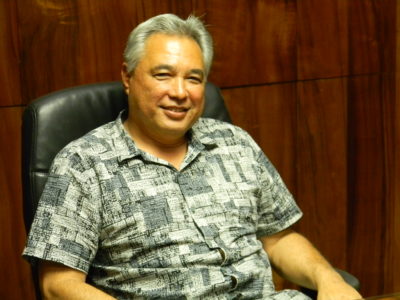
鈥淚n the near-term, electricity formerly provided by PGV will be generated mostly by burning fossil fuels, increasing air pollution and raising electricity prices for customers,鈥� the PUC said.
Last year, 31 percent of the island鈥檚 power came from PGV鈥檚 38-megawatt plant, said Mike Kaleikini, the company鈥檚 senior director, Hawaii affairs.
鈥淭hat鈥檚 a big hit to the grid and to the island,鈥� Kaleikini said of losing Hawaii鈥檚 only geothermal power plant, which opened in 1993.
But HELCO has offset that loss.
Plants in Hilo and Honokaa are now running longer, while a lesser-used Keaau plant also is generating more output, Ignacio said.
The transition away from lower-cost geothermal will add $1.70 to the typical monthly residential bill, he said.
‘We’re Fine Without It’
The transition has also made it clear that Big Island customers no longer have to have geothermal power.
鈥淥bviously it was not essential because we鈥檙e fine without it,鈥� said state Sen. Russell Ruderman, whose decades-long opposition to geothermal has earned him two arrests.
PGV鈥檚 operations have caused well blowouts, released deadly hydrogen sulfide (but not nearly as much as the volcano is producing) and offended some Native Hawaiian practitioners believing it鈥檚 sacrilegious to Madame Pele, the Hawaiian fire goddess.
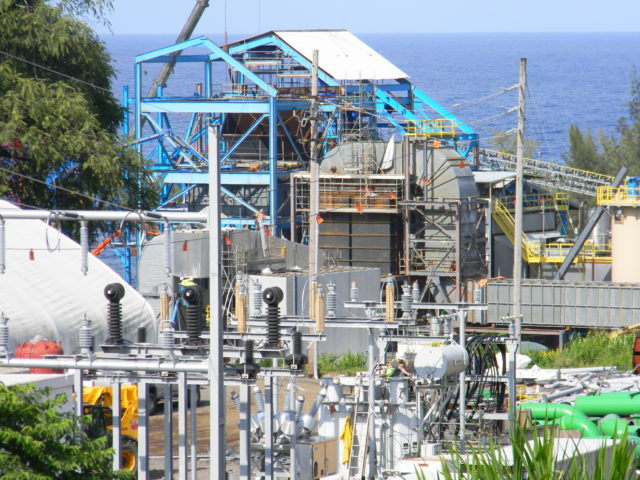
Under its PGV-funded relocation program, Hawaii County has bought 20 homes from people who refused to live near the plant, according to the county鈥檚 Planning Department. Three purchased in 2016 and 2017 were being readied for public auction when lava destroyed them, according to the department.
Asked if PGV鈥檚 power was essential to the island鈥檚 grid, Ignacio said a better description is 鈥減referable鈥� because it assisted with HELCO鈥檚 planned maintenance of its own facilities, while also adding to the island鈥檚 grid security.
The plant was 鈥渞eally necessary鈥� when it opened, he said of conditions in the early 1990s before HELCO expanded its Keahole plant to 58 MW and a private 60-megawatt plant opened near Honokaa, creating the island鈥檚 two largest power generators.
The ongoing Kilauea eruption has created too much risk and uncertainty to justify spending the money needed to reopen PGV, said Ruderman.
鈥淚t鈥檚 my belief that it鈥檚 the end of geothermal development in Hawaii,鈥� Ruderman said. 鈥淭he problem with geothermal is not political. It鈥檚 geological, and we鈥檝e seen that illustrated in the most dramatic fashion.鈥�
‘Totally Committed’ To Reopening
PGV and parent company Ormat are 鈥渢otally committed鈥� to reopening the plant, but it鈥檚 still not possible to determine if that can be accomplished, how long repairs could take or the price tag, Kaleikini said.
鈥淲e don鈥檛 have any current plans right now with the exception of monitoring the flow and the eruption,鈥� he said. 鈥淚t鈥檚 very tough.鈥�
Lava pouring from a nearby fissure has isolated the plant and covered three wells, causing millions of dollars worth of damage.
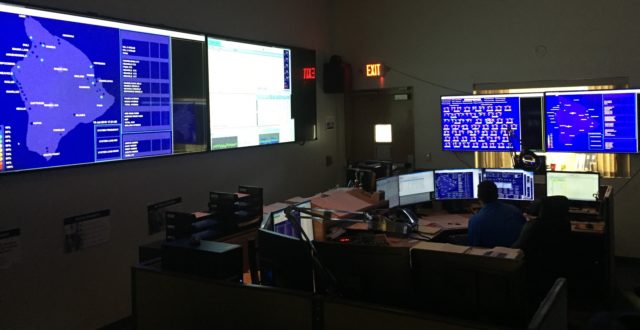
The plant cost $110 million to build before undergoing expansions at additional expense, he said. Dangerous conditions continue to prevent a thorough inspection of the plant about five miles from Pahoa, he said.
Ormat Technologies Inc., which runs geothermal plants in Central America, Africa and Asia, has up to $100 million in property and business-interruption insurance coverage, the company said in a .
Although PGV has explored tapping a geothermal resource in West Hawaii, it鈥檚 not actively pursuing that or looking for alternative sites, Kaleikini said.
PGV will keep each of its 30 full-time workers employed for at least a year, he said, noting many are volunteering at the various relief centers set up to help disaster victims.
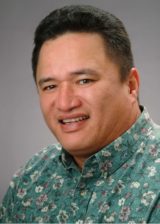
鈥淲e鈥檙e really committed to Hawaii,鈥� Kaleikini said.
The eruption has destroyed 765 power poles and caused HELCO to lose 935 customers, but the island鈥檚 peak demand has dipped just 10 MW, said the utility鈥檚 Waltjen.
Geothermal energy had been HELCO鈥檚 largest source of renewable energy, yet its loss has not prevented the utility from meeting the state鈥檚 mandate for renewable generation.
Before the eruption started May 3, HELCO was the statewide leader in supplying renewable energy, with 57 percent of its electricity generated from sources that included wind, solar and hydro, Ignacio said. The loss of PGV has dropped use of renewables to 37 percent, but that number will climb to 47 percent once the private Hu Honua Bioenergy plant comes online later this year, he said.
The state鈥檚 mandate is 30 percent by 2020 and a full 100 percent renewable production by 2045.
鈥淲e will meet it,鈥� Waltjen said.
Although HELCO has no current plans to build a new plant, it is to supply the company with 20 MW of solar or wind energy, Ignacio said.
Thoughts on this or any other story? Write a Letter to the Editor. Send to news@civilbeat.org and put Letter in the subject line. 200 words max. You need to use your name and city and include a contact phone for verification purposes. And you can still comment on stories on.
 GET IN-DEPTH
REPORTING ON HAWAII鈥橲 BIGGEST ISSUES
GET IN-DEPTH
REPORTING ON HAWAII鈥橲 BIGGEST ISSUES
We need your help.
Unfortunately, being named a聽finalist for a聽Pulitzer prize聽doesn’t make us immune to financial pressures. The fact is,聽our revenue hasn鈥檛 kept pace with our need to grow,听.
Civil Beat is a nonprofit, reader-supported newsroom based in 贬补飞补颈驶颈. We鈥檙e looking to build a more resilient, diverse and deeply impactful media landscape, and聽we hope you鈥檒l help by .
About the Author
-
 Jason Armstrong has reported extensively for both of Hawaii Island鈥檚 daily newspapers. He was a public information officer/grant writer for the Hawaii County Department of Parks and Recreation from 2012 to 2016 and has lived in Hilo since 1987. Email Jason at jarmstrong@civilbeat.org
Jason Armstrong has reported extensively for both of Hawaii Island鈥檚 daily newspapers. He was a public information officer/grant writer for the Hawaii County Department of Parks and Recreation from 2012 to 2016 and has lived in Hilo since 1987. Email Jason at jarmstrong@civilbeat.org

